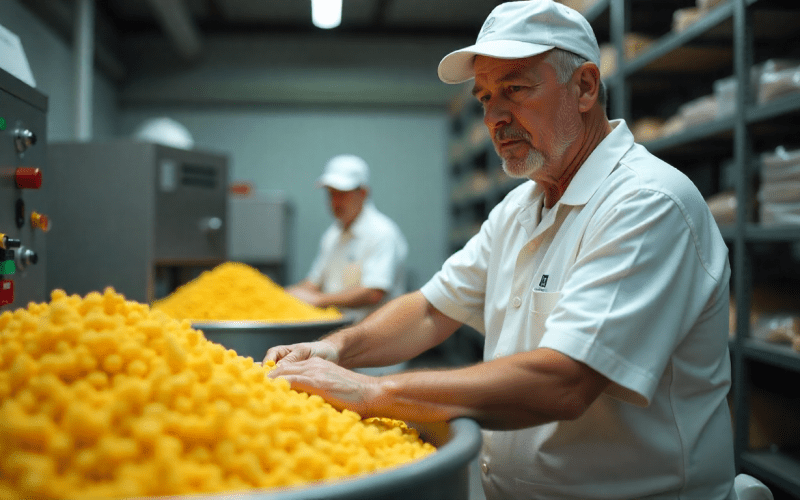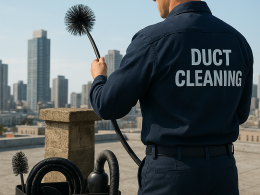Introduction
Picture this: you’re running a bustling food business maybe a cozy bakery or a sprawling processing plant. The smell of fresh bread or sizzling spices fills the air, but there’s a nagging worry in the back of your mind. Are you meeting every safety standard? Are your customers getting the quality they deserve? Enter ISO certification, the unsung hero of the food industry that’s like a trusty recipe for success. It’s not just a fancy badge to slap on your packaging; it’s a promise to your customers, your team, and yourself that you’re doing things right.
If you’re in the food industry, you’ve probably heard whispers about ISO standards—ISO 22000, ISO 9001, or maybe even ISO 14001. But what’s the big deal? Why should a busy food business owner care? Let’s break it down, piece by piece, and explore why ISO certification isn’t just a checkbox but a game-changer for your operation.
What’s ISO Anyway? A Quick Primer
ISO, or the International Organization for Standardization, sounds like something out of a corporate boardroom, right? But it’s simpler than it seems. Think of ISO standards as a global playbook—a set of guidelines that ensure your business runs smoothly, safely, and sustainably. For the food industry, the star player is ISO 22000, a standard laser-focused on food safety management. It’s like having a master chef double-checking every step of your process, from sourcing ingredients to serving the final dish.
Other standards, like ISO 9001 for quality management or ISO 14001 for environmental impact, can also apply, depending on your goals. The beauty of these standards? They’re not one-size-fits-all. Whether you’re a small artisanal jam maker or a massive frozen food supplier, ISO adapts to your needs. But here’s the thing: getting certified isn’t just about following rules. It’s about building trust, boosting efficiency, and standing out in a crowded market.
The Stakes Are High in the Food Game
Let’s be real—working in the food industry is no cakewalk. One misstep, like a contamination scare or a quality complaint, can tank your reputation faster than you can say “recall.” Customers are pickier than ever, and they’re right to be. With headlines about foodborne illnesses or shady supply chains popping up, people want to know their food is safe and reliable. ISO certification is like a neon sign that says, “We’ve got this under control.”
Take ISO 22000, for example. It covers everything from farm to fork—hazard analysis, supplier vetting, even how you handle a crisis. It’s not just about avoiding disasters; it’s about creating a system where risks are caught before they become problems.
So, What’s in It for You?
You might be thinking, “Sounds great, but is it worth the hassle?” Fair question. Getting ISO certified takes time, effort, and yes, some upfront costs. But the payoff? It’s like planting a seed that grows into a thriving tree. Here are a few ways ISO certification can transform your food business:
- Builds Customer Trust: That ISO logo on your product screams quality and safety. It’s a signal to customers—and retailers—that you’re serious about delivering the goods.
- Opens New Markets: Many big buyers, like supermarkets or international distributors, won’t even glance at suppliers without ISO certification. It’s your ticket to the global stage.
- Streamlines Operations: ISO forces you to tighten up your processes. That means less waste, fewer mistakes, and a smoother workflow. Who doesn’t want that?
- Reduces Risks: From allergen mishaps to supply chain hiccups, ISO helps you spot potential issues before they spiral out of control.
- Boosts Your Brand: In a world where everyone’s vying for attention, ISO certification sets you apart as a leader, not a follower.
The Journey to Certification: Not as Scary as It Sounds
Okay, so you’re sold on the idea, but the process sounds daunting, doesn’t certificacion iso ? I get it paperwork, audits, and consultants might not be your cup of tea. But here’s the good news: getting ISO certified is less about jumping through hoops and more about building a better business. Let’s walk through the steps in a way that doesn’t make your head spin.
First, you’ll need to pick the right standard. For most food businesses, ISO 22000 is the go-to, but if you’re focused on sustainability, ISO 14001 might be a great add-on. Next, you’ll do a gap analysis—basically, a reality check to see where your current processes stand against ISO requirements. This is where you might bring in a consultant, though plenty of small businesses tackle it themselves with online resources or templates from sites like ISO.org.
Then comes the fun part: building your system. This means documenting how you handle everything from supplier checks to sanitation protocols. It’s like writing a cookbook for your business every step matters. Once your system’s in place, you’ll test it, tweak it, and get ready for the big audit. A third-party auditor (think of them as a friendly food critic) will review your processes and, if all goes well, hand you that shiny certificate.
Here’s a pro tip: don’t rush it. Rushing leads to sloppy systems, and that’s a recipe for trouble. Take your time to get it right, and you’ll thank yourself later.
A Real-World Example: The Little Bakery That Could
Let me tell you about a small bakery I came across in Vermont. They were known for their killer sourdough, but they struggled to break into bigger markets. Sound familiar? They decided to go for ISO 22000 certification, thinking it’d help them land a deal with a regional grocery chain. The process wasn’t easy late nights, endless paperwork, and a few headaches along the way. But when they got that certificate, it was like flipping a switch. The grocery chain signed on, customers raved about their commitment to safety, and their team felt prouder than ever.
That’s the thing about ISO it’s not just a piece of paper. It’s a mindset shift. It forces you to look at your business with fresh eyes, to ask, “How can we do this better?” And when you do, the results speak for themselves.
Ready to Take the Plunge?
So, where do you start? If you’re feeling overwhelmed, take a deep breath. You don’t have to do it all at once. Start by researching which ISO standard fits your business ISO 22000 is a safe bet for most food folks. Then, reach out to a reputable certification body like SGS or Bureau Veritas for guidance. Or, if you’re a DIY type, grab a copy of the ISO standards from their official website and start mapping out your plan.What’s stopping you? The food industry’s tough, but you’re tougher. Get that ISO certification, and show the world what you’re made of.












